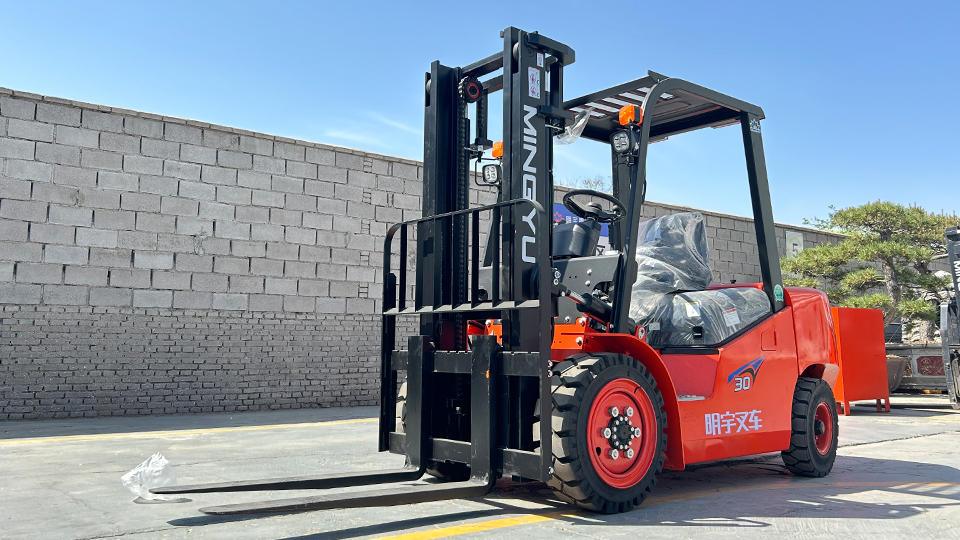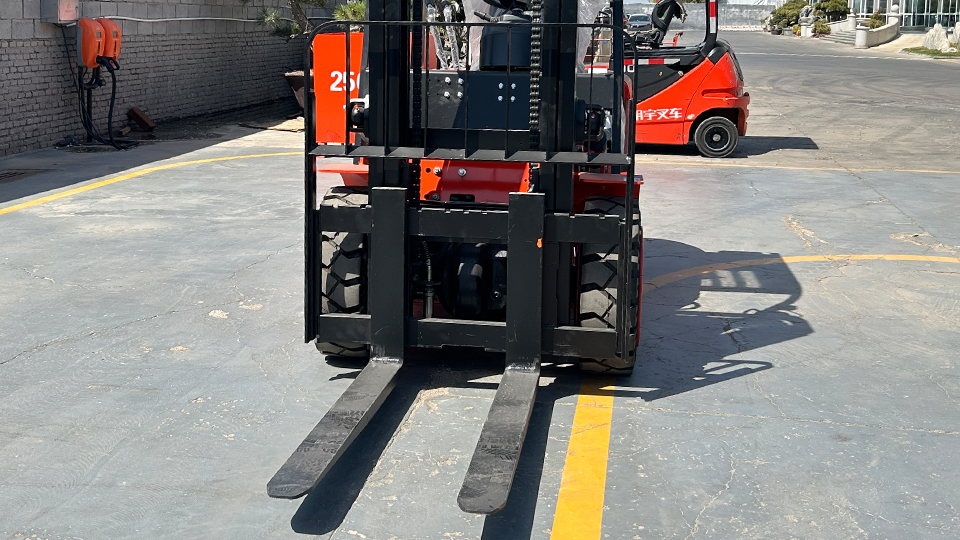
Decoding the Crown: A Comprehensive Guide to Reading Your Forklift Data Plate
The unassuming metal plate affixed to your Crown forklift, often referred to as the data plate or nameplate, is far more than just a serial number tag. It's a crucial document, a condensed encyclopedia of your machine's identity, capabilities, and limitations. Understanding the information encoded on this plate is paramount for safe operation, proper maintenance, and accurate parts ordering. Ignoring it can lead to hazardous situations, equipment damage, and costly mistakes.
This article will serve as your comprehensive guide to navigating the intricacies of a Crown forklift data plate. We will dissect each section, explaining the meaning and significance of the various specifications and warnings you'll encounter. While specific layouts and information may vary slightly between different Crown models and years of manufacture, the fundamental data points remain consistent.
Why is Understanding the Data Plate So Important?
Before we delve into the specifics, let's underscore the importance of being able to read this vital piece of information:
Safe Operation: The data plate clearly states the forklift's rated capacity at specific load centers and lift heights. Exceeding these limits can cause instability, tipping, and serious accidents.
Proper Maintenance: Knowing the model and serial number is essential for ordering the correct replacement parts and accessing accurate service manuals.
Load Handling: Understanding the weight and dimensions of the loads you can safely handle is critical for efficient and secure material transport.
Attachment Compatibility: The data plate may provide information regarding approved attachments and any associated capacity reductions.
Compliance and Regulations: Regulatory bodies like OSHA (Occupational Safety and Health Administration) require that forklift data plates remain legible and intact.
Resale Value and History: The data plate provides crucial information for verifying the forklift's identity and history.
Locating the Data Plate
The data plate is typically found in a readily accessible location on the forklift's frame. Common locations include:
Near the operator's compartment: Often on the dashboard, overhead guard support, or side panel.
On the mast assembly: Usually on one of the uprights or cross members.
On the chassis: Sometimes located on the front or side of the main body.
Take a moment to locate the data plate on your Crown forklift before proceeding. Ensure it is clean and legible. If it's damaged or missing, it needs to be replaced immediately.
Decoding the Key Sections of a Crown Data Plate
Now, let's break down the typical sections and information you'll find on a Crown forklift data plate:
1. Manufacturer Information:
Crown Equipment Corporation: This clearly identifies the manufacturer of the forklift.

Address and Contact Information: Often included for contacting Crown directly.
2. Model Designation:
This is a crucial identifier that specifies the exact model of your forklift. Crown uses a specific alphanumeric system for its models. Understanding this designation can provide initial insights into the forklift's type (e.g., reach truck, counterbalance, pallet stacker), series, and basic characteristics. For example, a model like "RR 5725-30" indicates a reach truck (RR), part of the 5700 series, with a base capacity around 3000 lbs. Consult Crown's documentation for a detailed breakdown of their model nomenclature.
3. Serial Number:
This is the unique identification number assigned to your specific forklift. It's like the VIN (Vehicle Identification Number) of a car. The serial number is essential for:
Accurate parts ordering: Ensuring you get the exact components designed for your machine.
Warranty claims: Providing proof of ownership and manufacturing details.
Service history: Tracking maintenance and repairs specific to your unit.
Identification: Clearly distinguishing your forklift from others of the same model.
4. Power Type:
This section indicates the power source of the forklift:
Electric (Battery): Often denoted by "Electric," "Battery," or specific voltage and battery type information.
Internal Combustion (IC): May specify the fuel type, such as "LPG" (Liquefied Petroleum Gas), "Diesel," or "Gasoline."
5. Capacity Rating:
This is arguably the most critical information on the data plate and requires careful attention. It specifies the maximum weight the forklift can safely lift under specific conditions. You will typically find one or more capacity ratings listed, each associated with a corresponding load center.
Rated Capacity (Base Capacity): This is the maximum weight the forklift can lift with a standard mast and at a specified load center. For example, you might see "Capacity: 3000 lbs."
Load Center: This is the horizontal distance from the front face of the forks to the center of gravity of the load. It's crucial because the further the load's center of gravity is from the mast, the less weight the forklift can safely lift. Common load centers are 24 inches (600 mm) and 48 inches (1200 mm). The data plate will clearly indicate the capacity at each specified load center. For instance, you might see:
"Capacity: 3000 lbs at 24 inch Load Center"
"Capacity: 2500 lbs at 30 inch Load Center"
Important Note: Always ensure that the actual load you are lifting has a center of gravity that falls within the specified load center for the corresponding capacity rating. Never exceed the rated capacity for the given load center.
6. Mast Information:
This section provides details about the forklift's mast assembly, which directly impacts the lift height and overall stability.
Mast Type: Crown uses various mast configurations, such as:
Simplex (S): Single stage mast.
Duplex (D): Two-stage mast.
Triplex (T): Three-stage mast.
Quadruplex (Q): Four-stage mast.
Maximum Lift Height: This indicates the maximum vertical height to which the forks can be raised. It's usually expressed in inches or millimeters.
Lowered Mast Height: This specifies the height of the mast when fully lowered. This is important for navigating doorways and low clearances.
7. Attachment Information (If Applicable):
If the forklift is equipped with attachments (e.g., side shifter, fork positioner, clamps), the data plate may have additional information related to these attachments.
Attachment Type: Specifies the type of attachment installed.
Capacity Reduction with Attachment: Attachments add weight and can shift the load center, thus reducing the forklift's lifting capacity. The data plate will clearly state the reduced capacity when the specific attachment is in use. For example, it might say "Capacity with Side Shifter: 2800 lbs at 24 inch Load Center."
Crucial: Always refer to the data plate when using any attachments. Never assume the base capacity applies when an attachment is fitted.

8. Weight Information:
Truck Weight (Unladen Weight): This is the weight of the forklift itself without any load. This information is important for determining floor load capacities and for transportation purposes.
9. Tire Information:
Tire Type: Specifies the type of tires fitted (e.g., pneumatic, solid, cushion).
Tire Size: Indicates the dimensions of the front and rear tires.
Tire Pressure: May provide recommended inflation pressures for pneumatic tires.
10. Voltage and Battery Information (for Electric Forklifts):
System Voltage: Specifies the operating voltage of the electrical system (e.g., 24V, 36V, 48V).
Battery Voltage and Amp-Hour (Ah) Rating: May provide the recommended battery specifications. Using an incorrect battery can damage the forklift.
11. Warning Statements and Safety Information:
The data plate will also contain crucial warning statements and safety precautions. These are not just boilerplate text; they highlight critical safety considerations for operating the forklift. Pay close attention to these warnings, which may include:
Read Operator's Manual: Emphasizing the importance of understanding the complete operating instructions.
Maintain Rated Capacity: Reinforcing the weight limitations.
Use Approved Attachments Only: Warning against using unapproved or incompatible attachments.
Proper Load Handling: Instructions on how to handle loads safely and securely.
Stability Warnings: Highlighting the risks of operating on uneven surfaces or with unstable loads.
Example of a Hypothetical Crown Data Plate Section:
Let's imagine a section of a Crown data plate:
Information Value
Model RR 5735-45
Serial Number 1234567
Power Type Electric (48V)
Rated Capacity 4500 lbs at 24 in LC
Mast Type Triplex
Max Lift Height 280 inches
Truck Weight 7800 lbs
Tires (Front) 28x9-15 Solid
Tires (Rear) 18x7-8 Solid
Warning See Operator's Manual for Safe Operating Procedures
This is a Crown RR 5735-45 reach truck with serial number 1234567.
It's electrically powered with a 48V system.
Its base lifting capacity is 4500 pounds when the load's center of gravity is no more than 24 inches from the front of the forks.
It has a three-stage (triplex) mast with a maximum lift height of 280 inches.
The forklift itself weighs 7800 pounds.
It is fitted with solid tires of the specified dimensions.
It explicitly warns the operator to consult the manual for safe operating procedures.
Conclusion: Your Forklift's Identity Card
The Crown forklift data plate is an indispensable resource for anyone involved in the operation, maintenance, or management of the equipment. It provides a concise yet comprehensive overview of the forklift's critical specifications and safety guidelines. By taking the time to understand each section of this "identity card," you contribute significantly to a safer, more efficient, and compliant work environment.
Remember to always refer to the data plate before operating the forklift, handling loads, or ordering parts. If you have any doubts or the data plate is unclear or damaged, consult your operator's manual or contact Crown Equipment Corporation for clarification or replacement. Treat the data plate with respect – it's a vital key to unlocking the safe and productive potential of your Crown forklift.
Name: selena
Mobile:+86-13176910558
Tel:+86-0535-2090977
Whatsapp:8613181602336
Email:vip@mingyuforklift.com
Add:Xiaqiu Town, Laizhou, Yantai City, Shandong Province, China